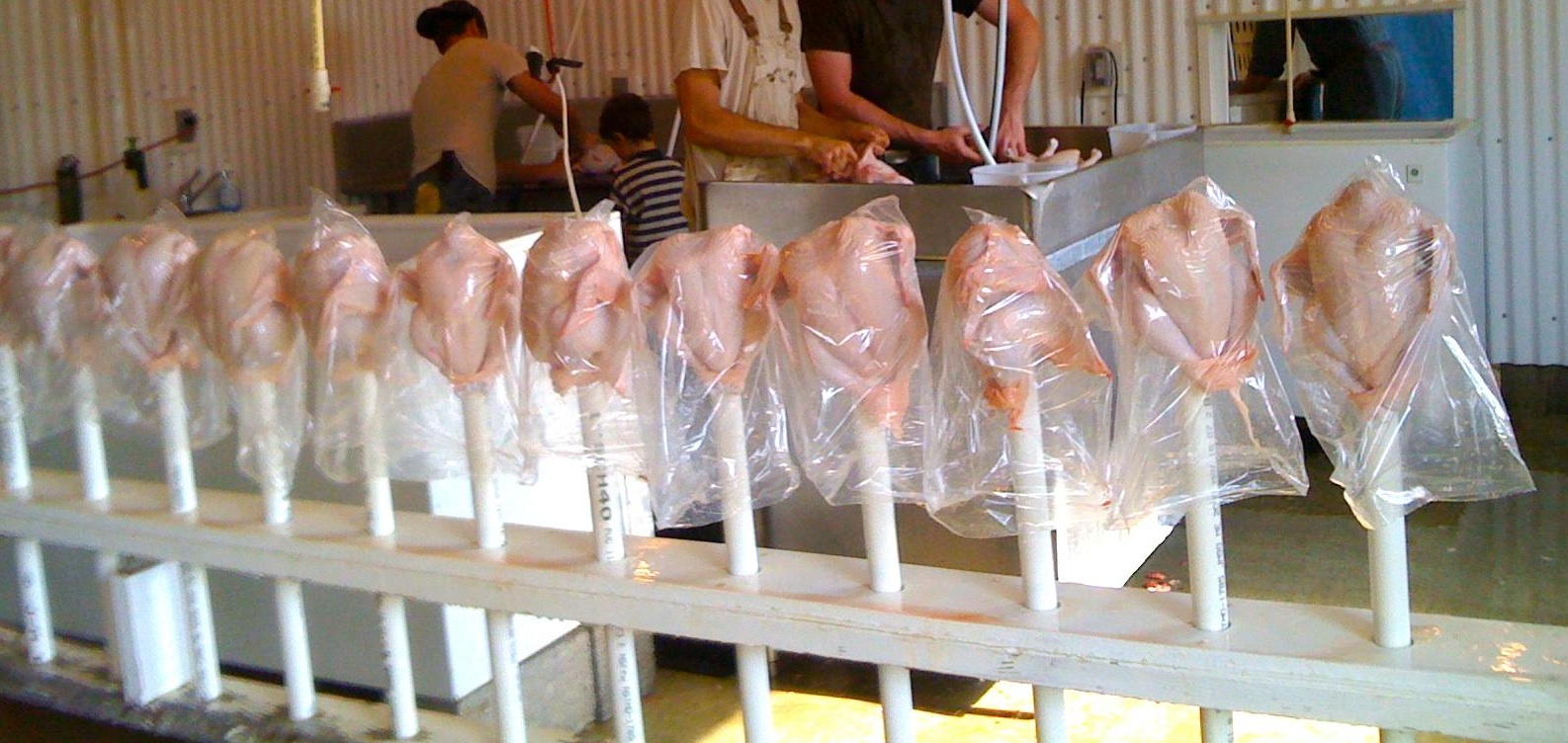
A chorus line of free-range chickens, straight off the pasture and freshly cleaned, await twist ties, labels and a trip to the freezer.
A witty (and wise) farmer once told me, “Forrest, if I could raise a cow that was made entirely out of filet mignon, I’d be a millionaire by now.” Of course, everyone knows that’s simply not the case; filet mignon is so expensive as a direct result of its anatomical scarcity. From my experience, an 1,100 lb (liveweight) steer only yields about 3 lbs of filet mignon, while a whopping 200 lbs is destined for ground beef. Its little wonder that we’ve become a nation built on hamburgers.
As an organic grass-fed livestock farmer, I learned many years ago to focus on selling ground beef first and foremost; if I didn’t, our farm would quickly be overwhelmed by the sheer volume of ground that comes from each of our cattle. Regardless of species, roughly 40% of our meat (beef, pork or lamb) returns from the butcher shop in some form of ground meat: hamburger patties, sausages, or ground chuck. Fortunately, these items have always been very popular amongst our customers, and despite the scant amount of N.Y. strip, ribeye and filet mignon we receive, the cuts sell fairly evenly.
That is, until we get to the ‘weird’ cuts. You know the ones I mean… the cuts I won’t list on my inventory board at farmers market, because I choose not to deal with the “Eww, yuck!” responses from casual passersby. Tongue, heart, kidneys, liver and ox tail top the chart, but it’s a long and eclectic list. People marvel at the fact that we offer chicken feet (yes, real chicken feet; bundled ten to a pound, they look like a very strange floral bouquet), scrapple, and tubs of pork lard. To further confound the people who balk at our beautiful free-range lard, I jokingly tell them that each tub comes with a complimentary drinking straw. Even our pasture-raised chickens, packaged whole (see above) are a real conundrum to most shoppers. When they learn we don’t offer boneless-skinless chicken breasts, they roll their eyes at the mere suggestion of cooking a 3 pound bird (enough for two servings and some scrumptious leftovers).
Replaced by our appetite for steaks and hamburgers, these cuts have largely disappeared from our cultural culinary consciousness, and are mostly found as props on shows like Fear Factor, fostering the negative stereotype. Even short ribs, those succulent-sweet mouthwatering slabs of grass-fed perfection, frequently languish at my market stall. When people ask me what to do with them, I tell them in a conspiratorial tone, “short ribs are our ‘stealth cut’… if you cook them just right, they’re the best piece of beef you’ll ever eat.”
In a spirit of discovery, adventure, and sustainable eating, listed below is a tasty list of recipes that Nancy, our resident farm chef, assembled. Please let us know what you think of these selections, and share your own family recipes and culinary discoveries with us!
Varietal Meats Preparation and Recipes
Varietal meats are delicate and require some handling. They have a high nutritional value, especially when they are sourced from pasture based, chemical-free farms like Smith Meadows. They include organ meats like kidney and liver; muscle meats like heart and tongue; bony meats like oxtail, ribs, soup and marrow bones. Many people have a built-in, cultural aversion to these lesser known cuts; however, when properly prepared and cooked, the flavor is an intense experience for the soul as well as the taste buds. With ever-increasing detachment from the source of nourishment in a busy lifestyle that plagues most of us, it is easy to not think of the animal from which the meat comes. We offer these recipes for reconnecting with the source. Animals are amazing in design. The extra care required in preparing varietal meat will remind you that to be an animal is to be a living work of sculpture.
Check out my books!














Leave a Reply